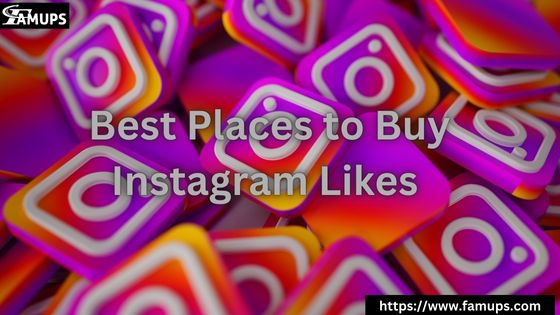As I sat there wondering what to write next, a notification popped up on my phone—it was Maya. We’ve been friends ever since I helped her format her first book.
I picked up the phone, and we chatted for a while. I asked how her journey’s been, what she’s thinking about writing next, and what her plans are for expanding her reach. That’s when she told me she’s not just aiming to dominate the author website scene anymore—she’s got her sights set on social media too. She wants her stories to reach every corner of the planet, not just the U.S.
And she needed my help to make that happen.
So, everything I shared with Maya about building a killer Author Platform? I’m putting it all in this blog post—for you. Grab your notepad and get ready to take some serious notes.
What Is an Author Platform (and Why Should You Care)?
If you’ve been following my content, you might already know this: when I first met Maya, she was disappointed and disheartened. Not because her story lacked heart, but because no one was seeing it. Worse, she was being mocked. Not for her writing, but for the poor formatting on Amazon that made her book look amateurish and, more critically, hurt her credibility with Amazon’s algorithm.
That’s the brutal reality—when you don’t have an author platform, you’re at the mercy of third-party algorithms. You’re handing over your visibility to code you don’t control. And that doesn’t just affect the book you’ve published; it can sabotage every one that follows.
Author platforms are the antidote. They give you reach, freedom, and authority—on your terms. Whether it’s a website, a newsletter, or your social pages, your platform cuts through the algorithmic noise and puts the power back where it belongs: in your hands.
Grow Your List, Grow Your Legacy: Email Marketing
So, when Maya asked how she could build something solid—something that wouldn’t crumble every time a third-party platform changed its rules—I pointed her straight to an author website. A digital HQ.
A place where she could showcase and sell all her books without relying on the whims of Amazon, Meta, or anyone else.
I also made one thing crystal clear: her site had to include email capture forms—on every major page. That way, anytime she had a new release, a sale, or a sneak peek to share, she could hit send and reach her readers directly. No filters. No guesswork.
To make it easier, I connected her with some of the best affordable book marketing services out there—people who could set up her forms, plug in the right CRM, and let her focus on writing, not tech headaches.
The Power of the Inbox
When we talk about social media, it’s all flash and chaos—one day your post hits 100K+ views, the next it’s buried under cat videos and celebrity drama. It’s fickle. It’s noisy.
Emails, though? Emails are sacred. They stick when everything else scrolls away. They land quietly, personally, and with purpose. And if you do it right, they convert better than any post ever could. Because while followers are just passing by, subscribers are already leaning in.
Lead Magnets and Signup Strategies
If you want to grow that email list, you’ve got to give readers a reason to sign up. That’s where a lead magnet comes in—your golden ticket. Offer a free short story, an exclusive chapter, a printable reading journal—anything that delivers value and reflects your brand.
Then, make sure those sign-up forms are where they count: your homepage, blog posts, even your email signature. Don’t make readers dig for them.
Not tech-savvy? No worries. Custom book marketing services can handle all of that for a minimal fee—so you can stay focused on what actually matters: writing.
Social Media: Choose Your Weapons Wisely
It’s like an all-you-can-eat Mexican buffet—pile your plate with everything, and if you’re not careful, you’ll end up with a bad case of regret (or worse, food poisoning). Same goes for social media . The key is to choose Author platforms that work for you, not ones that drain your time, energy, and sanity. Here’s how to play it smart—without burning out.
Instagram: A Visual Feast for Book Lovers
Instagram is still the Jon Jones of book writing world. Readers love to see what’s behind the curtain—your writing process, your workspace, your dog curled up next to your first draft.
Reels are your best friend right now: fast, fun, and favored by the algorithm. Use carousels to share value—writing tips, book recs, mood boards. And don’t underestimate a simple behind-the-scenes story to keep your readers invested.
Use hashtags that actually match your content and audience. Go niche over broad: #cozyfantasyreads > #books. And engage like a real human—comment, reply, share. That’s how you build community, not just numbers.
TikTok (BookTok): The Wild West with Viral Potential
BookTok is chaotic good author platform. It’s raw, authentic, and capable of selling out books overnight. But it’s also unpredictable, so treat it like a creative playground—not a sales pitch platform.
What works? Storytelling. Showcasing tropes. Authenticity. “Here’s what my villain whispered to me at 2AM” hits harder than “Buy my book.” Readers on TikTok want to feel something—lean into that.
Camera-shy? Start small. Use trending audio with text overlays. Film your hands flipping pages or your screen while you write. You don’t have to dance—you just have to show up.
Threads, X (formerly Twitter), and Facebook: Use Sparingly
These platforms aren’t dead, but they’re not your golden ticket either. Facebook still works if your audience skews older or you’re building a group. X (Twitter) is decent for networking and live conversations. Threads is… finding itself.
Use them intentionally. Don’t pour your soul into daily posts if they don’t bring real engagement. Know when to invest—and when to walk away.
Conclusion: Build Loud, Build Smart, Build Yours
Building an author platform isn’t about becoming an influencer. It’s about becoming un-ignorable. Whether you’re collecting email addresses like rare stamps or crafting Instagram reels that seduce the scroll, you’re building equity in your own voice.
You don’t need to be everywhere. You just need to be unforgettable where it counts. Control your narrative, own your list, and don’t let some faceless algorithm decide whether your words get seen. Maya didn’t—and now her stories echo far beyond her own borders.
Now it’s your turn. Plant the flag. Own the page. Build the platform.
Platform-Building Q&A: What You Need to Know
Q: What’s the most important piece of an author platform?
A: Your email list. Social platforms come and go, but a subscriber list is yours for life—and it drives actual sales.
Q: Do I need to be on every social media platform?
A: Nope. Pick 1–2 that align with your strengths and audience. Depth beats breadth every time.
Q: I’m not tech-savvy—can I still build a platform?
A: Absolutely. Use user-friendly tools like MailerLite or hire a book marketing service. Focus on your zone of genius: writing.




